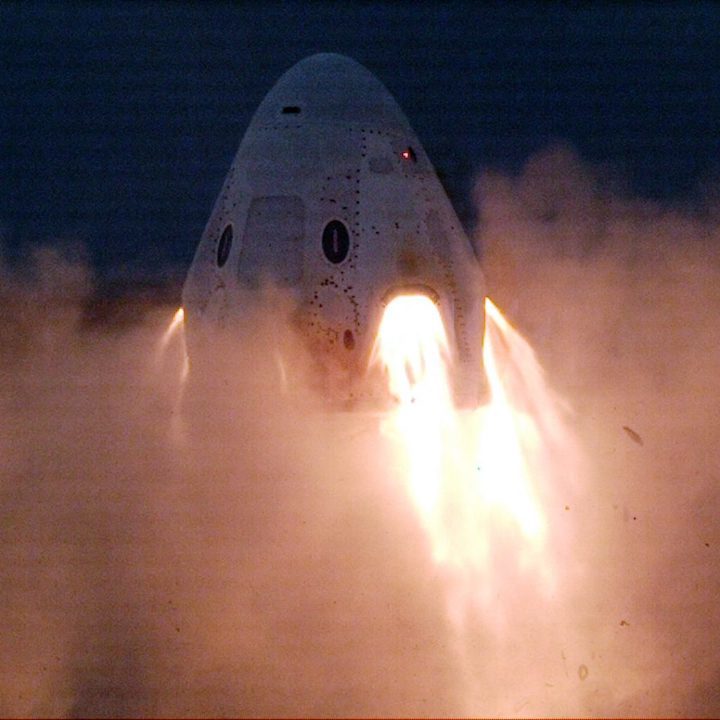Today, SpaceX completed a series of static fire engine tests of the Crew Dragon spacecraft in advance of an in-flight launch escape demonstration, known as the In-Flight Abort Test.
The engine tests, conducted near SpaceX’s Landing Zone 1 on Cape Canaveral Air Force Station in Florida, began with two burns for a duration of one-second each for two of Crew Dragon’s 16 Draco thrusters. The Draco thrusters are used for on-orbit maneuvering and attitude control, and would also be used for re-orientation during certain in-flight launch escapes. Following these initial Draco thruster burns, the team completed a full-duration firing for approximately nine seconds of Crew Dragon’s eight SuperDraco engines. The SuperDraco engines are designed to accelerate Dragon away from the F9 launch vehicle in the event of an emergency after liftoff.
In quick succession, immediately after the SuperDracos shut down, two Dracos thrusters fired and all eight SuperDraco flaps closed, mimicking the sequence required to reorient the spacecraft in-flight to a parachute deploy attitude and close the flaps prior to reentry. The full sequence, from SuperDraco startup to flap closure, spanned approximately 70 seconds.
In April, during a similar set of engine tests, the spacecraft experienced an anomaly which led to an explosion and loss of the vehicle. In the following months, an Anomaly Investigation Team made up of SpaceX and NASA personnel determined that a slug of liquid propellant in the high-flow helium pressurization system unexpectedly caused a titanium ignition event resulting in an explosion. Based on that investigation’s findings and months of testing, SpaceX redesigned components of the system to eliminate the possibility of slugs entering the high-flow pressurization system.
Today’s tests will help validate the launch escape system ahead of Crew Dragon’s in-flight abort demonstration planned as part of NASA’s Commercial Crew Program. SpaceX and NASA will now review the data from today’s test, perform detailed hardware inspections, and establish a target launch date for the In-Flight Abort Test.


